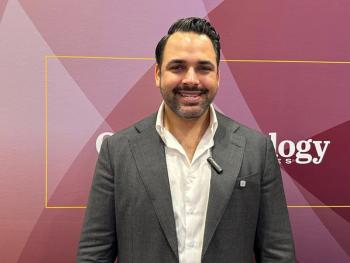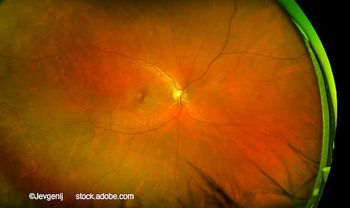
Bausch + Lomb new daily disposable lens debuts
A new premium daily disposable contact lens from Bausch + Lomb is made from a proprietary material that combines the features of conventional hydrogel and silicone hydrogel material.
Key Points
Birmingham, England-A new premium daily disposable contact lens (Biotrue ONEday) from Bausch + Lomb is made from a proprietary material (HyperGel) that combines the features of conventional hydrogel and silicone hydrogel material. Launched at the annual conference of the British Contact Lens Association last month, this new lens provides the optimal conditions for maintaining not only all-day comfort, but good ocular health as well.
The contact lens provides the maximum amount of moisture of any daily disposable lens available today, even after 16 hours of wear, the company noted. The lens contains 78% water-the same water content as the cornea-and delivers virtually the same oxygen level as the open eye.
"The aerodynamic blueprints of some automobiles, for example, are based on and take bio-inspiration from the aerodynamics of fish," Dr. Künzler said. "In the ocular world, the Crystalens, for example, is [made of] a material we developed several years ago that is based on the natural accommodating lens of the eye. We recently introduced a multi-purpose solution (Biotrue) that is bio-inspired and contains hyaluronic acid, which is a component of the eye and is responsible for lubrication."
Similarly, the outer surface of the new daily disposable contact lens is designed to mimic the lipid layer over the tear film, which prevents dehydration of the lens by holding water in the lens. To achieve this, Dr. Künzler and colleagues also incorporated surfactant chemistries that are enriched at the surface of the lens.
"The lipid layer of the eye is made up of naturally occurring surfactants," Dr. Künzler said. "These surfactants form a boundary layer, a lipid layer that minimizes and almost prevents water from going through it, yet maintains good wetting and lubricity."
Surfactants are incorporated into the lens material, they do not leach out; they are enriched at the lens surface and remain there, and mimic the natural lipid layer of the eyeball. In the past, lens dehydration was a problem, and sometimes, lenses dehydrated so much that they actually took water from the eye, a phenomenon known as epithelial dehydration, he added.
Developing a material that has 78% water and has a chemistry that prevents dehydration is a breakthrough, Dr. Künzler noted.
Recent studies of the new daily disposable contact lens have shown that, even after 16 hours of wear, the lens was losing, on average, only 1.5% water, compared with other lenses, which lose 6% to 8% water under normal conditions. To assess dehydration in the lens, clinicians also conducted studies in humidity-controlled rooms, with a relative humidity of around 5%, comparable to desert conditions. Even under such arid conditions, water loss with the new daily disposable contact lens was only 1.5%, Dr. Künzler said.
Newsletter
Don’t miss out—get Ophthalmology Times updates on the latest clinical advancements and expert interviews, straight to your inbox.



















































.png)


